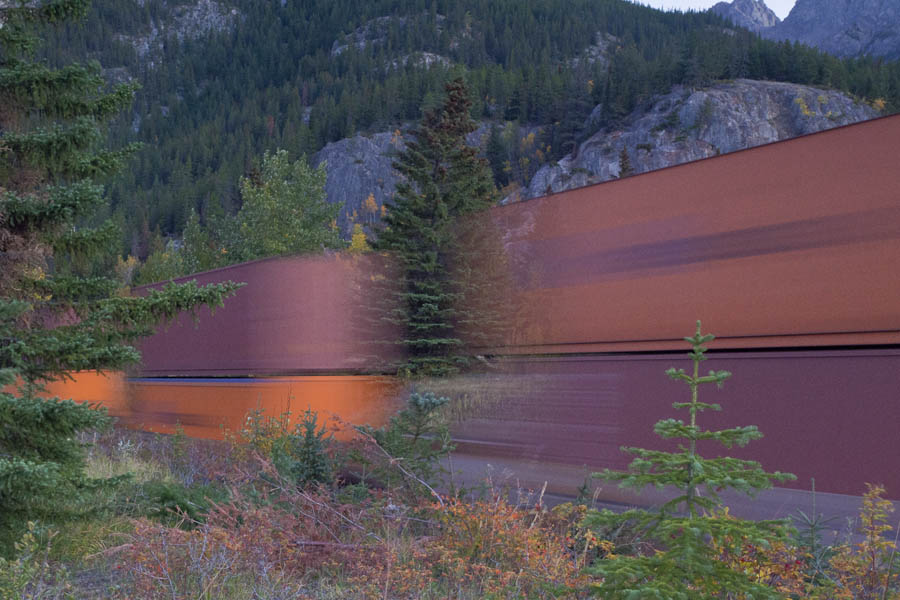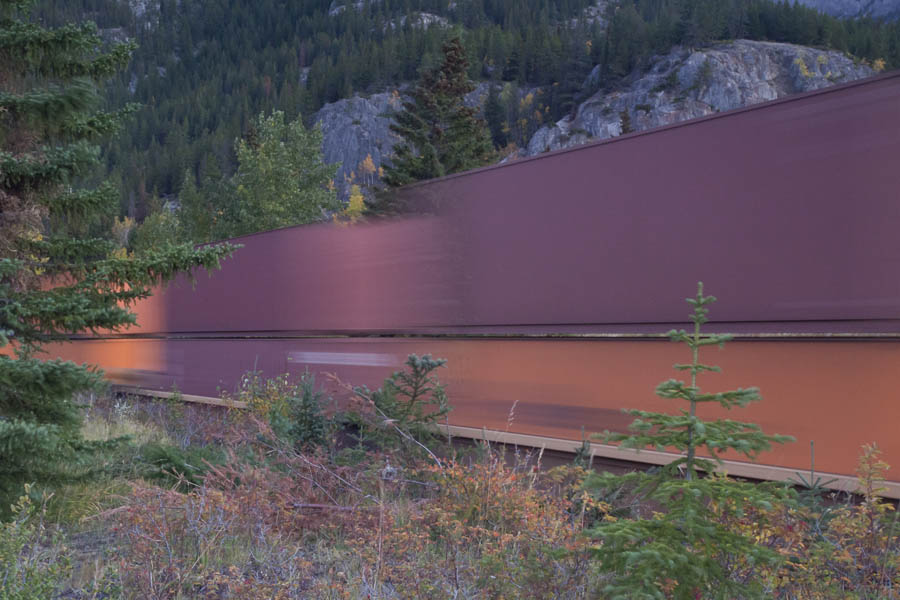This morning I was out taking some photographs and one of the locations I chose was very close to railroad tracks. I heard a train coming, so I turned in its direction to get a picture of it going by. I got several pictures , some of which display the unexpected outcomes you get when dealing with motion. This next picture is one example.

The train was a CPR freight carrying containers and traveling at a speed I estimate at 30 mph. You can see the motion blur that results from a relatively long exposure (1/4 sec) required to get a correct exposure in the morning light. Despite a very high ISO setting (3200), the exposure was too long to “freeze” the motion of the train. You can see that everything that was not moving appears quite normal. What is really odd is the evergreen tree in the middle of the frame showing through the train’s cars. This can be explained by the chance alignment of a gap between the cars and the tree. The train is moving at a speed of 44 ft/sec (30mph), so for an exposure of 1/4 sec., it would move 11 ft., insufficient to move the gap to fully eclipse the tree.. The trailing edge of the forward car overlaps the right side of the tree for a very brief period and is not exposed long enough in that position to cover the tree. Similarly, the leading edge of the following car overlaps the left side of the tree and I get a similar “ghosting”.
Five seconds later, I got another photo of different cars passing this same tree. There is not as much alignment of the gap between cars with the tree, so the tree does not show through as completely.

Make sense?
Situations like this can be very helpful to understanding how a camera works.
